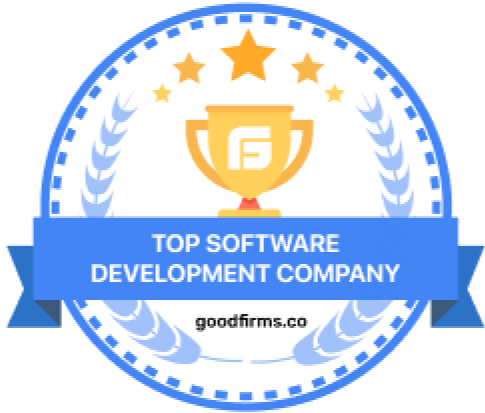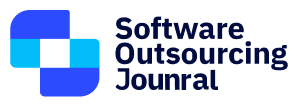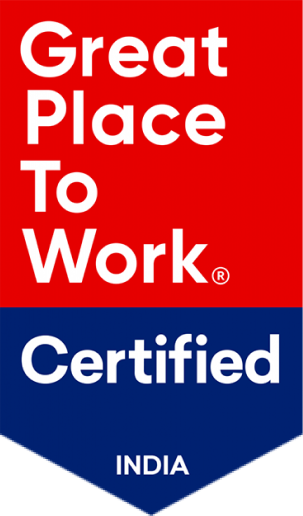In today’s fast-paced digital world, organizations must manage large and varied kinds of IT and non-IT assets. If not done properly, this can result in cumbersome asset management which might be erroneous and cost-effective. This is why ServiceNow IT Asset Management brings out an all-round solution in tracking the assets by an organization for cost reduction and the better usage of assets.
This detailed guide explores how ServiceNow IT Asset Management can help businesses manage their assets more efficiently, with expanded content covering its features, implementation, and industry-specific applications.
What is ServiceNow IT Asset Management?
It is the ServiceNow Asset Management cloud-based platform for IT and non-IT asset management across their lifecycle from procurement to disposal. Through consolidation of all asset data in a single, unified platform, it allows organizations to track asset health, waste reduction, compliance, and fact-based decision-making.
What it Includes:
- Hardware Asset Management: It tracks the physical assets like servers, workstations, network equipment, and printers, to ensure they are utilized optimally throughout their life cycle.
- Software Asset Management: It monitors and manages software licenses and usage, ensuring that vendor agreements are followed, and there is no overuse of licensed software.
- Cloud Asset Management: It keeps track of cloud-based resources and services (e.g., AWS, Azure), to ensure efficient and cost-effective usage and help organizations avoid unnecessary cloud expenses.
- Non-IT Asset Management: This refers to managing assets such as office furniture, facilities, and other forms of physical resources that tend to be a part of all-inclusive asset usage views.
Why It Matters:
Good asset management ensures resources are utilized, unnecessary costs avoided, and that financial and regulatory compliance is achieved.
ServiceNow enables organizations to:
- Have real-time insight into the performance, condition, and location of assets.
- Eliminate manual asset tracking, reducing errors and inefficiencies.
- Gain actionable insights that help improve strategic decision-making regarding future investments.
Key Features of ServiceNow IT Asset Management
1. Centralized IT Asset Management (ITAM)
Managing IT assets—hardware, software, and cloud—requires a centralized system that offers a unified view of all resources. ServiceNow consolidates IT and non-IT asset data into a single platform, which helps improve visibility and enables more effective asset tracking.
Key Capabilities:
- Unified Repository: A central repository for managing all IT and non-IT assets, so there is one version of the truth across departments. This eliminates silos of information and enhances collaboration.
- Asset Dependency Mapping: Visualizing how assets are interconnected helps identify potential points of failure. This is particularly useful in change management and troubleshooting.
- Comprehensive Reporting: ServiceNow provides detailed reports and dashboards that allow for a deep dive into asset performance metrics, such as utilization rates, maintenance costs, and lifecycle status. These insights help decision-makers optimize resource allocation.
Example Use Case:
A global manufacturing company integrated its IT and non-IT assets into ServiceNow Asset Management. This centralized system provided a clearer understanding of resource utilization and helped them save by identifying underutilized assets.
2. Lifecycle Management from End-to-End:
The asset lifecycle is procurement, deployment, maintenance, upgrade, and eventually, disposal. ServiceNow helps organizations manage this whole lifecycle so that the assets are in optimal condition and used efficiently.
Key Capabilities:
- Procurement and Contract Management: ServiceNow automates the procurement process by integrating into supplier portals. Organizations can thus track orders, approve purchases, and manage contracts effectively. The contract management feature ensures that the vendor agreements comply and are up-to-date.
- Asset Maintenance Scheduling: The scheduling of maintenance of physical and IT assets is essential for preventing downtime and extending their life cycle. ServiceNow helps to schedule and track maintenance work, ensuring assets are maintained at regular intervals.
- Disposal Management: When assets have reached the end of their useful life, ServiceNow ensures proper disposal through safe wiping of data on hardware, as well as environmental compliance for e-waste.
Example Use Case:
A healthcare organization used ServiceNow to track medical equipment. Lifecycle management capabilities helped the organization decrease unplanned downtime and ensured that the equipment met regulatory standards for patient safety.
3. Workflow Automation and Process Optimization
Asset management tasks automated through workflows reduce human error and increase operational efficiency. ServiceNow automates many key workflows associated with asset management, streamlining daily processes and allowing teams to focus on more strategic tasks.
Key Capabilities:
- Automated Inventory Alert: When the inventory reaches specific levels, ServiceNow is programmed to alert purchasing teams so that stockouts may be avoided.
- License compliance monitoring: ServiceNow runs automatic scans of the entire software landscape for license compliance violations and alerts the pertinent teams to take corrective measures before it becomes a costly breach.
- Auto-Generation of Reports: Asset performance, inventory status, and financial data reports are generated automatically and can be distributed to stakeholders, which saves much administrative time.
Example Use Case:
A retail chain had used ServiceNow’s automation to simplify its hardware asset management. The automated alert and procurement processes reduced inventory discrepancies and improved order accuracy.
4. ITSM Seamless Integration
ServiceNow Asset Management integrates well with IT Service Management (ITSM), thereby enhancing the management of incidents, problems, and changes with precise and current asset information. This integration ensures that the IT teams have the latest data when resolving issues or implementing changes.
Key Capabilities:
- Incident Management: ServiceNow automatically links assets to incidents and provides IT teams with full asset information, such as location, owner, and configuration, to expedite problem resolution.
- Change Management: The change management teams can better understand the impact of changes on existing assets by using integrated asset data, thereby minimizing service disruption.
- Problem Management: Asset data is used to detect recurring issues with specific assets, thereby facilitating root cause analysis and proactive problem resolution.
Example Use Case:
A ServiceNow Asset Management integration into its ITSM system enabled an IT services provider to lower the average resolution times. The visibility of asset information allowed technicians to resolve incidents more effectively and faster.
5. Advanced Cloud Asset Management
Adoption of cloud computing has been crucial in most businesses, though using the cloud resource becomes very hard. ServiceNow has integrated asset management solutions to maximize the utilization of and minimize the expense on cloud services. In such a way, a company can realize maximum value out of the investment.
Key Capabilities:
- Multi-Cloud Support: ServiceNow can easily integrate with major cloud providers, such as AWS, Microsoft Azure, and Google Cloud, allowing the tracking and management of all cloud assets in one location.
- Cost Optimization: This allows an organization to understand where they have unused or underused cloud resources, thus downsizing unnecessary instances and reducing overall costs for cloud.
- Governance and Compliance: With integrated governance tools, ServiceNow provides the usage of cloud resources to be in line with compliance standards, thereby ensuring minimal risks.
Example Use Case:
A tech startup that had gone all out in investing on cloud resources used ServiceNow to track usage across AWS and Azure. They managed to reduce their cloud bill by 30% in the very first quarter by identifying the underutilized resources and optimizing the cloud costs.
6. Software License Management and Compliance
Organizations must ensure they remain compliant with software license agreements, which can be challenging given the complexity of modern IT environments. ServiceNow helps businesses manage their software licenses, reducing the risk of non-compliance and optimizing software expenditures.
Key Capabilities:
- License Tracking: ServiceNow tracks the usage and renewal status of software licenses, ensuring that all licenses are used within their terms.
- Audit-Ready Reports: ServiceNow has reports that are audit-ready with industry regulations, helping avoid penalties due to non-compliance.
- Usage Optimization: The platform identifies unused licenses and recommends reallocation in order to reduce purchases not needed.
Example Use Case:
One large educational institution managed to avoid fines for the usage of unlicensed software with ServiceNow, tracking licenses and using this data to avoid a penalty that would have otherwise incurred, as it identified the existence of unused licenses to be reallocated, hence decreasing 25% of its expenditures for software.
7. Reporting and Analytics
Data-driven decision-making is the need of the hour for modern organizations, and ServiceNow excels in delivering real-time data and analytics for asset management. It offers several customizable reports and dashboards, which makes tracking easier for asset performance, costs, and more.
Key Capabilities:
- Custom Dashboards: Tailor dashboards for specific KPIs, like asset depreciation, maintenance schedules, and license usage.
- Predictive Analytics: Utilize data insights to predict future asset requirements, optimize procurement, and plan for replacements.
- Cost Reporting: Report on the costs of assets, total cost of ownership (TCO), and return on investment (ROI) for improved financial planning.
8. Risk Management and Security
ServiceNow is proactive about the risks inherent in asset management by detecting and mitigating vulnerabilities within IT infrastructure and non-IT resources. It supports organizations in protecting valuable assets while also being in compliance with regulatory standards.
Key Capabilities:
- Asset Security Risk Identification: It scans the assets for vulnerabilities (such as old software or hardware) and alerts to reduce the risk of security threats.
- Compliance with Various Regulations: ServiceNow provides the help needed to maintain compliance with numerous regulations, including asset-related policies for data security such as HIPAA, GDPR, SOX.
- Proactive Risk Mitigation: It involves periodic audits and tracking, helping identify potential security threats before becoming critical issues to ensure constant protection.
9. Scalable Architecture
ServiceNow is cloud-based, ensuring that businesses grow their asset management solution just as their operations grow. ServiceNow supports hundreds or thousands of assets.
Key Capabilities:
- Elastic Scalability: You might be expanding operations, adding a new location, or having more assets in volume; ServiceNow can scale based on growth without sacrificing performance.
- Global Reach: For any multinational organization, ServiceNow Asset Management supports multiple languages and currencies, making it appropriate for global businesses.
- Customizability: ServiceNow can be customized to address specific business needs, allowing companies to scale with unique workflows, asset types, and requirements.
Implementation Best Practices
To achieve maximum value out of ServiceNow Asset Management, an organization should strategize the implementation process.
- Assess Asset Types and Needs: Clearly define what types of assets need to be managed-this could include everything from physical IT equipment to cloud resources and non-IT assets.
- Define the Goal and Key Performance Indicators: Identify what the organization hopes to achieve by utilizing asset management, such as lowering the costs incurred, enhancing compliance, or maximizing operational efficiency.
- Tailor ServiceNow: Customize the platform’s workflows, reports, and dashboards to accommodate the unique needs of the company and the industry.
- Training Stakeholders: Educate appropriate personnel in the system for maximum adoption and utilization.
- Monitor and Improve: Continuously monitor asset data, evaluate performance metrics, and adjust workflows to improve efficiency over time.
Conclusion
ServiceNow Asset Management provides businesses with powerful, flexible solutions for all assets throughout their lifecycle. Thus, it empowers organizations to optimize resources; increase asset utilization; and ensure better cost reduction. It achieves all this by proactively tackling asset-related challenges of business organizations, keeping those organizations agile, compliant, and competitive.
For organizations looking to optimize their asset management processes in a rapidly evolving business environment, ServiceNow Asset Management can help them stay ahead. Contact us today and learn how ServiceNow can power your asset management strategy.
If you are a business looking to get started with ServiceNow IT Asset Management, we are here to help you. Get in touch with us to take this forward.

Start a Project with Ajackus





























